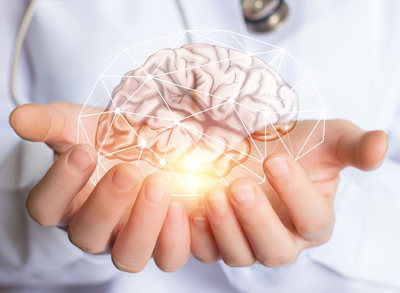BRAIN
The brain is the body’s control center. It forms the core of the central nervous system by creating, sending, and processing nerve impulses, thoughts, emotions, physical sensations, and more.
The skull encloses the brain, protecting it from injury.
Neurologists are doctors who study the nervous system. Over time, they have identified numerous parts of the brain, including systems within the brain that function similarly to independent organs.
The brain is made up of three main subparts: the cerebrum, the cerebellum, and the brainstem. Within these areas, there are several key components of the brain that, together with the spinal cord, comprise the central nervous system.
The major areas of the central nervous system include:
- The medulla: This is the lowest part of the brainstem. It helps control heart and lung function.
- The pons: Located above the medulla in the brainstem, this area helps control eye and facial movement.
- The spinal cord: Extended from the base of the brain and down the center of the back, the spinal cord helps with many automatic functions, such as reflexes. It also sends messages to and from the brain.
- The parietal lobe: Situated in the middle of the brain, the parietal lobe supports the identification of objects and spatial reasoning. It also plays a role in interpreting pain and touch signals.
- The frontal lobe: The frontal lobe, which is located in the front of the head, is the largest section of the brain. It plays a role in many conscious functions, including personality and movement. It also helps the brain interpret smells.
- The occipital lobes: Positioned near the back of the brain, the occipital lobe primarily interprets vision signals.
- The temporal lobes: Located on either side of the brain, the temporal lobes play a role in numerous functions, including speech, scent recognition, and short-term memory.
The brain’s two halves are called the right and left hemispheres. The corpus callosum connects these two hemispheres.

